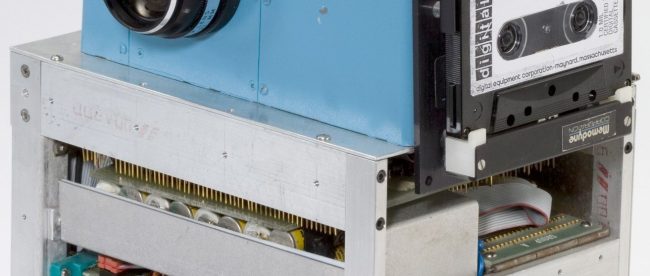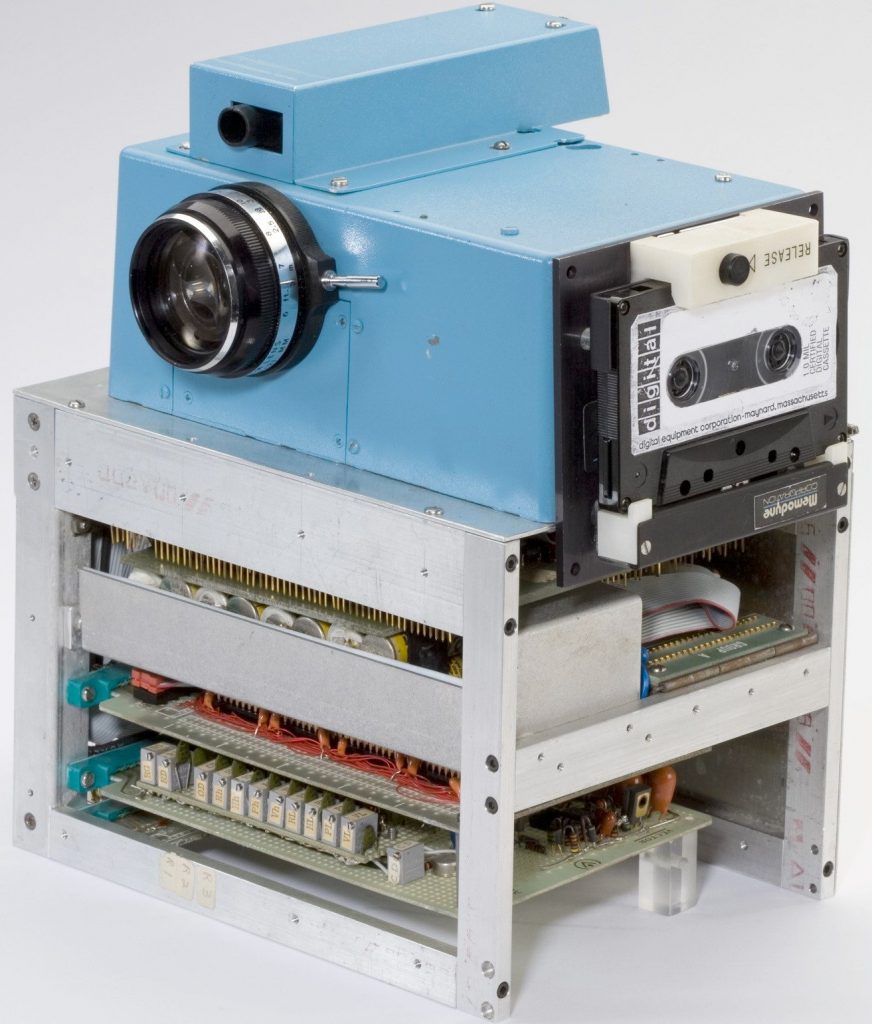The First Digital Camera (That Wasn’t)

Chances are, you’re reading this on a camera. That’s a very odd sentence but in a sense, it’s probably true. If you’re on a smartphone, the screen these words are on is also the screen you’ll use to set up your next selfie, snap a quick picture of something interesting around you, or make a video call. If you’re on a laptop, you probably don’t use camera lens too often, but there it is, pointed right at you. If we define “camera” pretty broadly, almost all of our phones and computers can fall into that category.
Digital cameras are everywhere now. But if you’re old enough — maybe in your 30s? — you remember a day before digital photography. We used film instead — which meant that you had to buy some film every time you wanted to take a picture. And for many decades, companies like Eastman Kodak made a fortune selling film. By the early part of the 21st century, though, it became clear that film business was a rapidly shrinking one, in no small part because of the popularity of digital — that is, filmless — photography. In 2012, Kodak — a company with a $30 billion market cap just two decades prior — declared bankruptcy.
Kodak shouldn’t blame their downfall on the digital camera, though. They invented it.
In 1975, an engineer named Steven Sasson, then 24 years old, was given the fun task of tinkering with some new technology to see what he could make of it, per an interview with America Public Media’s Marketplace. What he came up with was the contraption seen below.

It doesn’t look like it, but that’s the world’s first digital camera. It’s a hodgepodge of parts borrowed from other devices; the New York Times summarized it as “a Rube Goldberg device with a lens scavenged from a used Super-8 movie camera; a portable digital cassette recorder; 16 nickel cadmium batteries; an analog/digital converter; and several dozen circuits — all wired together on half a dozen circuit boards.” You couldn’t see the pictures you just took — a separate, similarly bespoke device — a cassette reader which connected to a television set. But the camera and viewer combo worked, capturing images and making them available for later viewing. It was a bulky, expensive, and impractical product, but it was cool.
You’ve never owned one, though, and neither has anyone you’ve ever met. Kodak execs decided not to market it; as the New York Times separately reported, Sasson’s team was met with a “barrage of curious questions” such as why a person would want to view their photos on a television, and “what does an electronic photo album look like?” A few decades later, digital cameras would be everywhere. But in 1975, Kodak’s leadership, unconvinced of this particular camera’s commercial value, decided to keep Sasson’s invention as a research and development project; it never saw its way into the hands of consumers.
Despite what we know now, that decision was probably the right one. The first digital camera was clunky, to say the least, and almost certainly more expensive than a traditional film-based set-up. Film gave you higher quality, too, and storing photos on cassette tapes is hardly efficient. The world simply wasn’t ready for digital cameras, and a viable consumer product was at least a generation away. Besides, Kodak was ultimately in the film business and had built the infrastructure and corporate culture necessary to create and distribute large amounts of chemicals and manufacture film at scale. Even if they had invested more in Sasson’s digital device, they weren’t well positioned to survive a post-film world.
But nevertheless, Kodak was there first.
Bonus fact: If your laptop has a camera and you’re concerned with someone using it to spy on you, you’re not alone. Facebook founder and CEO Mark Zuckerberg tapes over his, as does former FBI director James Comey. Comey explained his reasoning to the Guardian: “I put a piece of tape over the camera because I saw somebody smarter than I am had a piece of tape over their camera.”
From the Archives: The Wright Place at the Wright Time: The history behind the iconic photo of the Wright Brother’s famous flight.
